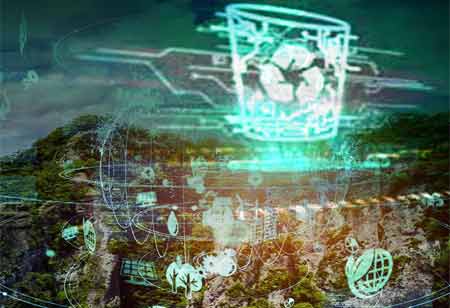Thank you for Subscribing to Agri Business Review Weekly Brief
Influence Of Digital Technologies On The Agricultural Industry
The COVID-19 pandemic has strained global agriculture and food supply systems, causing food processing and agricultural production delays.

By
Agri Business Review | Wednesday, December 22, 2021
Stay ahead of the industry with exclusive feature stories on the top companies, expert insights and the latest news delivered straight to your inbox. Subscribe today.
As much as the epidemic affected the farmers, it is now accelerating growth in the agriculture industry with new technological trends.
FREMONT CA: The COVID-19 pandemic has strained global agriculture and food supply systems, causing food processing and agricultural production delays. The prosecution of steps to stop the virus from spreading resulted in a severe economic downturn that impacted farmers, workers, and consumers worldwide. As a result, food expenses around the world have skyrocketed. The epidemic-induced disruption has reconcentrated national attention on food safety and quickened growth across the sector.
Major trends that are pushing growth in the agriculture sector involve:
Farm robotics
Robotics' capability is growing along the agricultural value chain, from planting to harvesting, much obliged to advancements in technology. For example, blue River is a startup that builds on robots that can pick out undesired plants and spray them with high-precision herbicides, decreasing input costs and bettering efficiency. Farms can be automated with planting robots and drones watering plants in the field. Carbon Robotics, a Seattle-based firm, has built a weed-eating robot that can drive itself through fields. In addition, a cast of companies has developed apple-picking robots and nursery devices.
Traceability of Food
The use of blockchain technology to notify food is gradually gaining traction. Blockchain provides the potential to instantly trace the movement of a food product and its ingredients through all supply chain steps. Accordingly, it lowers the risk of foodborne illness at every stage of the supply chain, and it's time to correct or contain contamination or outbreaks. It also lets customers track the origins of their food from farm to fork.
Farm analytics
Based on corresponding sensor data and crop imaging analysis, farm analytics chains regulate irrigation and fertilizer distribution equipment. As a result, farmers can more effectively identify and predict deficiency with smart monitoring, which integrates meteorological and soil data with nutrient and irrigation systems to escalate resource usage and yields. Sensors can also send imagery from far-flung parts of fields, cooperating farmers in making timely decisions and receiving primitive indications of potential problems such as disease or pests.
Farmer Infomation system
Rather than having a buyer-seller relationship, cooperatives and international trade businesses desire to integrate farmers and producers into their supply chains. Two examples include increased traceability and the creation of farm-level intelligence systems to track agricultural yield at the individual partner level.





